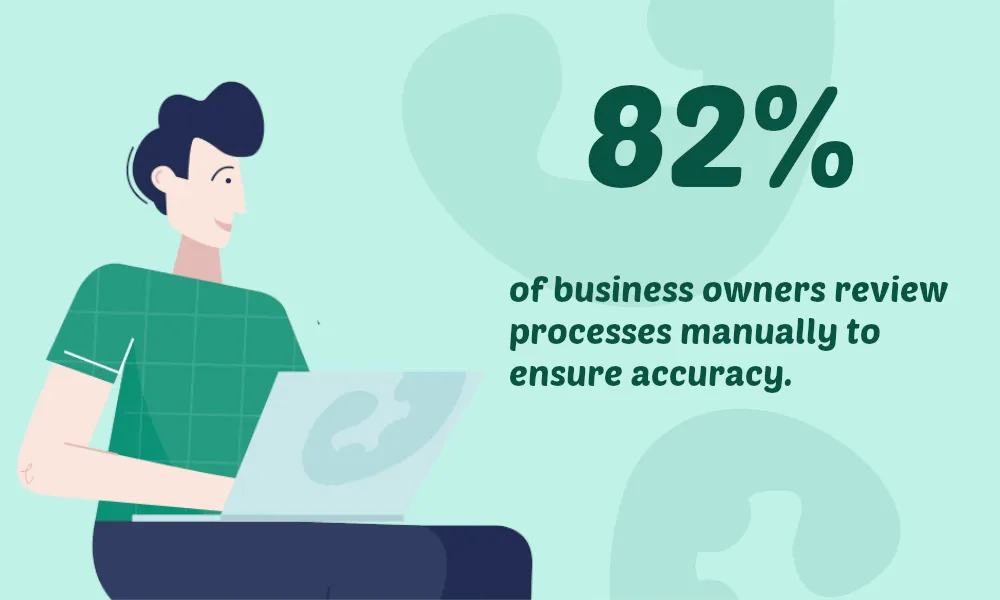The three-hundred fold payroll cost optimization? You can do it!


A common-sense sees an optimization as collecting some minimal improvements to deliver outstanding results. But what if a sixty-fold or even three hundred-fold payroll cost reduction was possible right here, right now?
Payroll cost is unavoidable in every company existing. But on the other hand – it probably can be significantly lower than it is now.
According to the QuickBooks report small and medium business owners are usually surprised by the complexity of payroll duties. In fact, 63% of them have never expected how time-consuming the payroll will be.
To be precise, the payroll-related activities consumed up to 4 hours and 52 minutes for each payment period. Depending on the way the wages are paid to the employees this amount stacked up to over 7 full, 8-hour working days when the payment was done monthly or over 31 full working days when the wage is paid weekly.

The calculation above was done only counting the statistical time consumed by payroll in a small or medium company, yet where payroll is done by business owners only. The scale is tremendous – how much money would be otherwise earned? How many more interesting things would have been done instead of paperwork?
How to reduce the cost of payroll
When thinking about the payroll-related costs, there is one thing that they have in common – they are not based on resources required to deliver a product or service. The core of the cost comes from the time consumed to deliver it. And…
“Time is money” – Benjamin Franklin, “The advice to a young tradesman"
Considering that, the only reasonable way to reduce the cost of payroll is to cut the time spent on the payroll-related activities.
Internal payroll cost audit
The goal of the audit is to count how much the company pays for the payroll. It is not, at least not only, about summing up the wages of payroll specialists. To run the audit the business owner needs to get the answers for the questions displayed below:

How many employees are engaged in payroll?
Typically – all of them. There are payroll specialists who need to count the man-hours and wages. But not only – usually every employee needs to report the time spent on working.
How much time is consumed by payroll-related activities?
When it comes to accountants and HR teams it can be even all the time they work – that’s basically what they get paid for. But what about the rest? How much time do they need to enlist every day? To ask for a day off? Is it about five minutes a day? A minute a day? And that takes us to the next question...
How much do you pay for it?
To get the answer the business owned needs to calculate the time spent on payroll-related activities and multiply it by the hourly rate of every employee engaged. Simplicity itself, isn’t it?
Optimizing payroll with automation
The core costs of payroll are man-hours wasted on unnecessary or obsolete paperwork. Considering that, the best and the most intuitive way to reduce the costs is to cut the time spent by employees. This can be done by applying automation and new technologies (like clock in and out automatically).
Calamari enables the user to opt-in with a single click in a web app or mobile app. So the time required to opt-in is reduced to seconds. The same goes for opt-out or informing about eventual breaks. Putting a single list in a shared space like the kitchen or near the bosses’ doors seems a good idea, but minutes wasted for going there, signing in, and getting to the right desk can stack to ridiculous numbers.
The same goes for managing the days off. Calamari delivers a module that fully automates the information flow by providing convenient dashboards for employees, managers, and payroll staff with all information required to take a day off.
Last but not least, the software automates the reporting, thus the payroll staff wastes no time for manual counting and delivering a report about the hours worked and the wages to pay. Also, the reports are adjusted to the local legal framework, so the accounting team needs not to worry about compliance.
Summary
Cutting one minute to one second delivers a sixty-fold optimization. Cutting five minutes into one second is a three hundred-fold optimization spike. Being able to put these numbers into the presentation about recent successes can be a good reason to implement as much payroll automation as possible.
If you want to discuss the matter or have some thoughts to exchange, don’t hesitate to contact us. We will be more than happy to talk with you!



















